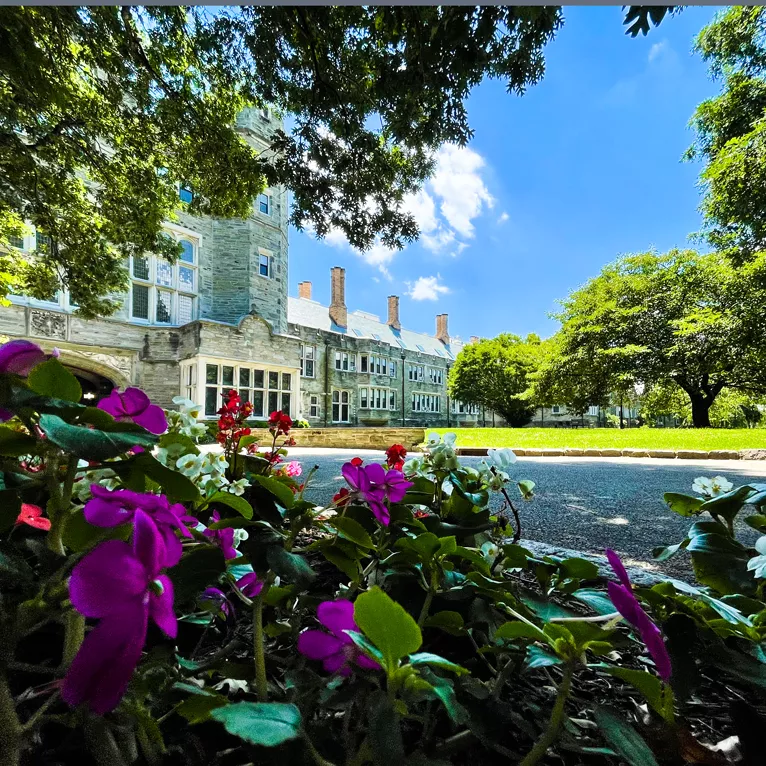Program Requirements and Opportunities
Published annually, the Course Catalog sets out the requirements of the academic programs--the majors, minors, and concentrations. Each Bryn Mawr student must declare a major before the end of the sophomore year. Students may also declare a minor or a concentration, but neither is required for the A.B. degree. Students must comply with the requirements published in the Course Catalog at the time when they declare the major, minor and/or concentration.
The Course Catalog also sets out the College requirements. Students must comply with the College requirements published at the time they enter Bryn Mawr College.
For more information, visit the Catalog Homepage to view the current content. To view Catalogs from previous academic years, visit the Catalog Archives page.
Students may complete a major or minor in History.
A primary aim of the Department of History is to deepen students' sense of time as a factor in cultural diversity and change. Our program of study offers students the opportunity to experience the past through attention to long-range questions, comparative history, and complex causation. Students learn about particular periods, cultures, and historical moments alongside mastering the ability to consider multiple viewpoints, aggregate data, articulate research questions, marshal evidence, and construct arguments, and have opportunities to engage with digital humanities and public history.
The department's 100-level courses, centered upon specific topics within the instructor's field of expertise, introduce students to a wide array of subjects and themes, and are open to all students, regardless of any prior instruction in History. In the 200-level courses, the department offers students the opportunity to pursue interests in specific cultures, regions, policies, or societies, and enables them to experience a broad array of approaches to history through attention to primary sources, introduction to historiography, and mastery of chronology.
The department's 300-level courses build on students' knowledge gained in 200-level classes, and provide opportunities to explore topics at greater depth in a seminar setting. 300-level courses offer students opportunities to undertake significant intellectual projects based on research in primary and secondary sources.
Major Requirements
Eleven courses are required for the History major, and two-Introduction to Historical Methods (HIST 299), and Approaches to Historical Praxis (HIST 398)-must be taken at Bryn Mawr. In HIST 299, students will be introduced to different historical frameworks and historiographic debates that animate the field. (Majors taking History 299 will fulfill the College's Writing Intensive requirement. ) It is intended to prepare advanced sophomores and juniors to do advanced work at the 300-level and in some advanced 200-level courses. In HIST 398, which must be taken in fall of senior year, the students complete a series of focused assignments designed to give them an opportunity to practice different ways of "doing history." Students will work with professors as well as other resources at the College (archivists, librarians, digital technologists, Praxis Program, etc.) to articulate a historical question, research it, and produce a final project. This final project may be a term paper, but might also take the form of a digital project, an exhibit, a short film, a Praxis internship in a museum or archive, or something else. Upon successful completion of History 398, students may, if they wish, continue their project into a second semester. This is not required, but if students wish to do so, the department will authorize and provide support for an independent study in order to facilitate that ongoing work.
The remaining nine history courses may range across fields or concentrate within them, depending on how a major's interests develop. Of these, at least two must be seminars at the 300 level offered by the Departments of History at Bryn Mawr, Haverford or Swarthmore Colleges or the University of Pennsylvania. (It is strongly recommended that at least one of these advanced courses be taken with Bryn Mawr history faculty). At least one course, at any level, must concentrate on the period before 1800.
Only two 100-level courses may be counted toward the major. Credit toward the major is not given for either the Advanced Placement examination or the International Baccalaureate.
Honors
Majors with a cumulative GPA of at least 3.0 (general) and 3.6 (history) at the end of their senior year qualify for departmental honors.
Minor Requirements
The requirement for the minor is six courses, at least four of which must be taken in the Bryn Mawr Department of History, and include one course at any level that deals with the period before 1800, at least one 300-level course within the department, and two additional history courses within the department. No more than two course at the 100-level may count toward the minor.
# # #

Contact Us
Department of History
Professor Anita Kurimay
History Departmnet Chair and Co-Director of the Gender and Sexuality Program
Old Library 205
Email: akurimay@brynmawr.edu
Phone: 610-526-5040